The Pokémon Company has revealed new details regarding the 2024 Pokémon Championship Series. Read on below to learn more for upcoming locations and dates:
Which decks might be the best in Brazil?
The first International Championships of the season is on the way, with players from around the world arriving in São Paulo, Brazil, ready to battle. They’ll be met by a formidable crop of local players ready for any challenge. The Latin America International Championships is also the first tournament where the Scarlet & Violet—Paradox Rift expansion is legal for play, so all players will be on the lookout for powerful new decks.
To get fans prepared for the upcoming competition, we’ve brought our Power Rankings panel together once again to examine the top decks that they expect to see. From tried-and-true decks to brand-new challengers, find out what you can expect to see when the battles begin November 17 on Twitch.tv/PokemonTCG.

A lot of hype has been generated for Miraidon ex ahead of the Latin America International Championships. This Lightning-type toolbox deck is fresh from a victory at the Toronto Regional Championships and has gained a handful of new cards from the Pokémon TCG: Scarlet & Violet—Paradox Rift expansion that will help it continue to excel.
As Basic Lightning-type Pokémon, Iron Hands ex and Tapu Koko ex can be searched for and put onto the Bench with Miraidon ex’s Tandem Unit Ability. Their attacks improve the versatility of the deck, specifically by adding a much-needed way to manipulate the Prize race via Iron Hands ex’s Amp You Very Much and a way to control the tempo of the game via Tapu Koko ex’s Vengeful Shock. I expect to see some variance in the way that Trainers approach deckbuilding, as tough decisions will need to be made about whether these new Pokémon feature alongside or in lieu of current powerhouses Raichu V, Raikou V, and Flying Pikachu V.
The latest expansion includes plenty of exciting new cards, and there have been no official tournaments where the latest expansion has been legal for competitive play, so it is difficult to predict the metagame for LAIC. In these situations, it is wise to bring a deck to battle that is both versatile and can consistently perform its strategy. With Flaaffy’s Dynamotor, the new Earthen Vessel Item card, and the new Technical Machine: Turbo Energize to help power up Pokémon found through Tandem Unit, it is unlikely that Miraidon ex will short-circuit. — Ellis Longhurst

In terms of power level, Chien-Pao ex paired with Baxcalibur from the Scarlet & Violet—Paldea Evolved expansion is hard to beat. Chien-Pao ex can do practically unlimited damage, which is great for dealing with large, multi-Prize threats. Radiant Greninja can be used against low-HP, single-Prize targets, making the deck versatile against most matchups. I think the biggest shortcomings of the deck, and the reasons it has struggled to break through and get a major tournament win, have been its consistency and its relatively fragile board state. The deck has a lot of moving parts and can struggle against hand-disrupting cards like Iono or Stadium cards like Path to the Peak.
Heading into Scarlet & Violet—Paradox Rift, the deck gets another very interesting option in Iron Hands ex. It’s relatively easy to get this Pokémon going with Baxcalibur and Earthen Vessel, which lets you grab the Basic Lighting Energy for its attack. Iron Hands ex keeps the Energy in play, protecting the Bench by creating another high-pressure target for the opponent. We might also see Counter Catcher make its way onto some lists because of its great synergy with Irida.
If Chien-Pao ex gets set up properly, I’m not sure what will be able to stop it—we have seen in the past it’s not always easy. The new Iron Valiant ex might also pose a problem for the deck by sniping down Frigibax before it gets the chance to evolve.
Heading into LAIC, I expect this deck archetype will be one of the most respected and popular in the room. — Tord Reklev

While a lot of the top decks heading into LAIC are newer to the scene, Mew VMAX has been a constant contender since its release in late 2021. This deck has shifted from a Fusion Strike Energy / Meloetta focus to a Double Turbo Energy focus, then back to Fusion Strike Energy. Through all that, it has never lost its power to deliver clean, one-hit Knock Outs against almost everything in the Standard format, which is its greatest strength. Mew VMAX has faced down some of the clearest counters the Pokémon TCG has ever seen—including Drapion V and Spiritomb, which both have Abilities that feel lab-created to target Mew VMAX and friends—and remained a top-tier foe all along. Konsta Kallama was victorious at the recent Lille Regional Championships with Mew VMAX, showing it still has the stuff to compete.
We know that Scarlet & Violet—Paradox Rift is shaking things up big-time. So, what’s next for Mew VMAX? The new expansion doesn’t do a whole lot for the Pokémon itself, but it does create a hostile environment for some of its biggest enemies, Comfey / Lost Zone Toolbox and Gardevoir ex. While I think it’s premature to consider either of those decks dead, they’re both on life support at the minimum. Sometimes the best boost a deck can receive is the elimination of its bad matchups, and that’s what Mew VMAX faces here. The next format looks likely to feature a lot of Basic Pokémon ex that can’t deal with Mew VMAX efficiently, instead of Comfey and Gardevoir ex, and that’s good news for all fans of the Fusion Strike style.
Ultimately, if every player shows up with Drapion V and Spiritomb, things might get dicey for Mew VMAX. I have a hard time believing that’ll happen, and that makes me excited about Mew VMAX’s chances in Brazil. — Christopher Schemanske

Despite some early skepticism from players, Charizard ex quickly established itself as one of the best decks in the format during recent Regional Championships. Charizard ex’s high HP, incredible late-game damage output, and excellent typing make it difficult to deal with for most other decks, and the Infernal Reign Ability makes it easy to set up multiple attackers throughout the game. We’ve seen many different variants of the Charizard ex deck, with partners like Pidgeot ex, Gallade, and Arceus VSTAR, and even a combination with the Lost Zone engine.
Compared to other Evolution-based decks like Gardevoir ex, Charizard ex doesn’t require a lot of setup to get going—a single Rare Candy is enough to immediately start attacking. This will be very important against the new cards from Scarlet & Violet—Paradox Rift! Iron Hands ex can close out games in just a few turns when left unchecked, which is a huge issue for slower decks. Charizard ex, however, can easily punish aggressive approaches like that to the point where many decks don’t even want to take the first Knock Out against it.
There is a possible problem for Charizard going into LAIC, though: The popularity of Chien-Pao ex. Even though Charizard ex doesn’t have Weakness to Water-type Pokémon, the Chien-Pao ex / Baxcalibur deck doesn’t have much difficulty reaching 330 damage, which makes for a tough matchup. If Chien-Pao ex lives up to its high placement in our Power Rankings, that could be bad news for Charizard ex players. — Robin Schulz

Roaring Moon ex is one of the new powerhouses from Scarlet & Violet—Paradox Rift. This powerful Basic Pokémon can hit for 220 damage by discarding a Stadium in play, and it can also deal with higher-HP Pokémon with its Frenzied Gouging attack, which will Knock Out anything at the cost of Roaring Moon ex doing 200 damage to itself. This combination of high damage and the capacity to KO any Pokémon is reminiscent of Giratina VSTAR, a successful archetype over the past year.
Roaring Moon ex is a Darkness-type Pokémon, which is great for two reasons. First, it hits Mew VMAX for Weakness, giving it a good matchup against one of the strongest decks around. Second, it can be powered up by Dark Patch. Combine that with the new Professor Sada’s Vitality, and it’s reasonable to expect to attack on the very first turn of the game, especially since both these forms of Energy acceleration go well with draw cards like Radiant Greninja, PokéStop, and Squawkabilly ex, which can all discard Darkness Energy.
I expect Roaring Moon ex to be supported by Pokémon like Bibarel or Darkrai VSTAR, and possibly assisted by secondary attackers like Galarian Moltres or Morpeko, but the Ancient Pokémon will be the star of the deck. Its self-damage can be mitigated by extra HP from Ancient Booster Energy Capsule or healing from Emergency Jelly, but expect Roaring Moon ex to be a fast archetype, not a durable one. — Stéphane Ivanoff
Stéphane Ivanoff: One of the many cards that couldn’t fit into our top five decks, and my pick for the deck with the highest potential, is Iron Valiant ex. Tachyon Bits is one of the best Abilities in the whole game: putting damage counters on the board is very powerful, and Iron Valiant ex can do so every turn. With four of them in play, you can add eight damage counters to your opponent’s board in one turn, enough to KO many low-HP Pokémon!
As threatening as that seems, Iron Valiant ex players will need to figure out how to deal with bigger threats like Pokémon ex. Iron Valiant ex could be used in combination with other attackers, like Rapid Strike Urshifu VMAX and Medicham V (which have always seen success combined with cards that can put damage counters on the opponent’s Pokémon), or it could be used as an attacker itself, powered up by Xatu, for example. It even has synergy with Ting-Lu ex, which might finally find its time to shine. The best way to use Iron Valiant ex remains to be discovered, but I think if a player figures out how to best take advantage of its huge potential, they have a chance at winning the whole event!
Robin Schulz: The biggest LAIC of all time, the first International Championships after this season’s increase in prize money, the first tournament after Scarlet & Violet—Paradox Rift shakes up the metagame in a big way…there are many reasons to be excited for the upcoming competition!
Just like in recent formats, I expect a huge variety of decks to show up. For the first time since their respective release, Gardevoir ex, Lugia VSTAR, and Lost Zone decks have not made it into our Power Rankings, but that doesn’t mean they aren’t good anymore or won’t see play. There are also new decks like Gholdengo ex or Iron Valiant ex that have the potential for high placements. I’m sure we’ll see a lot of different strategies at this tournament, which should make for a very entertaining stream.
One of the fun things to observe at Internationals is the friendly rivalry among the four ranking regions. With many of the best players in the world expected to be in attendance, will the Latin American players be able to defend the title on their home turf? Two of the local favorites have to be William Azevedo and Pedro Pertusi, who, among numerous other accomplishments, dominated the most recent Regional Championships in Brazil with their creative takes on Charizard ex. And of course we can’t ever forget about Gustavo Wada, one of the most successful players of all time, who would surely like to add the title of LAIC Champion to his impressive resume!
Christopher Schemanske: Something unique about the current Standard format is the number of one-card techs that can entirely change a matchup. Worried about Radiant Greninja hurting your small Basic Pokémon? Manaphy is here to help. Sableye cramping your style? Jirachi is at your service. Not a fan of Mew VMAX? Drapion V and Spiritomb are both ready to go. Have room for all of them on your Bench? Of course not.
Choosing to include one of these Pokémon to shore up a bad matchup, or “teching” for that matchup, can be a really attractive option for players. Who doesn’t like sitting down to a match and knowing you’re on the fast track to a win just based on the cards in your deck? The downside comes when you functionally have a 59-card deck playing against any other matchup, which is why the best techs are often useful against multiple matchups. The other fear: sometimes opponents have an answer! Bellibolt is a theoretical barrier against Miraidon ex decks, but if your Miraidon ex opponent also happens to have a Mew ex in store, you’ll have wasted your time (and a Bench spot) for nothing.
And now there are more tech options than ever. To me, the key to success this LAIC is choosing the deck that needs to include the fewest techs and can win on its own core strategy—in other words, against Mew VMAX and Miraidon ex. The other option is to find a deck that can afford to include a full suite of techs without distracting from its core strategy, which is where something like Roaring Moon ex might shine. Like many players, I think the Standard format is at a fascinating crossroads, and I’m excited to see what shakes out at LAIC!
Ellis Longhurst: The Latin America International Championships is one of my favorite events each season because it often feels like a celebration of players from that region. The top tables are flush with local talent who may not travel abroad regularly to compete, which means that viewers of the Championships broadcast are treated to exciting matches and new storylines to follow.
In recent years, however, this event has been dominated by players from Europe and North America. The most recent LAIC Champion trophies were earned by Power Rankings panelists Robin Schulz and Tord Reklev and in 2019 and 2022, respectively. (Does that mean that Stéphane, Christopher, or I will win it in 2023?)
It is conceivable that a player from Oceania could earn a top spot at LAIC this year, particularly if their name is Brent Tonnison. Since placing 10th at the 2023 Pokémon World Championships, Brent has traveled to four Regional Championships around the globe and achieved a place in Day 2 at all of them, including 7th place in Peoria, Illinois. Brent achieved all of these results with Gardevoir ex, which does not feature on this edition of the Power Rankings. Despite this, I have confidence that Brent will continue his streak.
Tord Reklev: It looks like the trend of strong November sets continues. Roaring Moon ex, Iron Valiant ex, Iron Hands ex, and Gholdengo ex are major additions to the metagame, and all are strong enough to build separate archetypes around. Even though Iron Valiant ex did not make our top five list, I still think it could shape up to be one of the scariest decks in the format if players can find the right list.
The introduction of Counter Catcher is also major, and it adds another reason for players to avoid Knock Outs at certain points in the game. Last year, we saw Europeans doing really well at LAIC, with three players in the Top 8. I think the tournaments with new expansions are always the most fun, simply because of how unpredictable they are. With limited time, players are much less likely to make the same decisions for deck lists, which should make for an entertaining stream and tournament experience for everyone involved. This is also the closest we have ever been to an expansion release with Japan, which means players will have to work even harder with the limited information available from results.
About the Writer
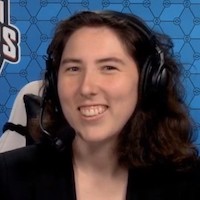
Ellis Longhurst
Ellis Longhurst is a contributing writer for Pokemon.com. She has been competing in high-level Pokémon TCG tournaments since 2006 and creating written content for the Pokémon community since 2011. Now she brings some Australian flavour to the Play! Pokémon commentary teams at the International and World Championships.
About the Writer

Tord Reklev
Tord Reklev is a contributing writer for Pokemon.com. He is a longtime player from Norway, playing the game since he was 6 years old. In becoming Champion at the 2022 Latin America International Championships, Tord is the first player to win all four International Championships and complete the Grand Slam. Outside of the game, he is a student and enjoys playing tennis. You can find him at most big events and can follow him on Twitter at @TordReklev.
About the Writer

Christopher Schemanske
Christopher Schemanske is a contributing writer for Pokemon.com. He’s been playing the Pokémon TCG since 2010, with a streak of Worlds invitations between 2012–2018. Nowadays, he enjoys splitting his Pokémon time between playing and being part of the awesome Professor staff teams at major events.
About the Writer

Robin Schulz
Robin Schulz is a contributing writer for Pokemon.com. He has been competing in Pokémon tournaments for 10 years and was the Pokémon TCG Masters Division World Champion in 2018. He spends a lot of time traveling and competing, and he rarely misses a big event. Aside from playing Pokémon, he attends university, where he is studying mathematics.
About the Writer

Stéphane Ivanoff
Stéphane Ivanoff is a contributing writer for Pokemon.com. A longtime Pokémon fan, he has played the Pokémon TCG competitively since 2010 and is a former National Champion, seven-time Worlds competitor, and the 2018 and 2019 North America International Champion in the Masters Division. He studied mathematics and has a degree in Probability and Statistics, but he says that doesn’t help his game as much as you’d think! You can follow him on Twitter @lubyllule.
Source: Pokemon.com
A new cast of experts weighs in on the biggest stories expected out of São Paulo.
It’s not hard to see the storylines surrounding the 2024 Latin America VGC International Championships. It’s the first international competition of the season, the first played with the Regulation Set E ruleset—which introduced Pokémon from the land of Kitakami—and the first VGC International competition to be held in the region since 2019. And that’s just to start.
Fortunately, we’ve gathered four amazing experts for an exciting roundtable to discuss what to look for when the matches begin on November 17: Joe Ugarte, Lou Cromie, Gabriel Agati, and Aaron Traylor, joined by Chris Shepperd from Pokemon.com. From intriguing Pokémon to top players to surprise strategies, this group has it covered. Read on so you’ll be ready to watch all three days of action on Twitch.tv/Pokemon.
Chris Shepperd: All right, let’s get rolling! We’ve just concluded our last Regional Championships before LAIC in Toronto and Lille. What are the big takeaways from those events, particularly when it comes to Pokémon usage?
Joe Ugarte: One of the most notable things to me was how Hisuian Arcanine has taken all four Regional Championships in Regulation Set E. It’s been very consistent in this format and has been making lots of high placement appearances throughout every tournament.
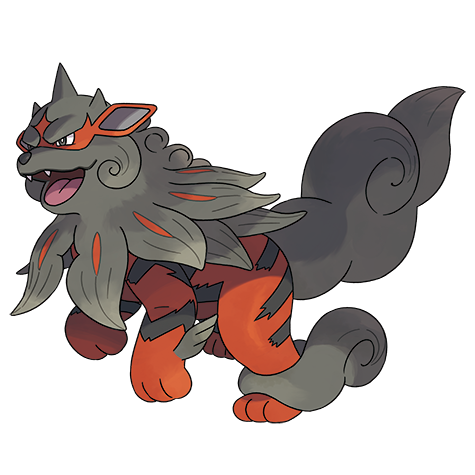
Lou Cromie: I agree with Joe. Arcanine is a very good puppy right now.
Gabriel Agati: I think Tornadus + Rapid Strike Urshifu has once again proven to be one of the strongest cores in the metagame.
Aaron Traylor: I wonder why players seem to forget to use the strongest Pokémon once formats shift.
Cromie: For me it’s the consistency—even in a Terastallization format—of the classic Fire, Water, and Grass core. Rillaboom, Hisuian Arcanine, and Rapid Strike Urshifu are just so strong right now. I feel the teams that have a good balance of offensive power and then these defensive types are starting to really come out on top.
Traylor: At the beginning of Regulation Set E, it was all about Ogerpon and all of its masks, and understandably so—it’s one of the most powerful Pokémon added in the Teal Mask DLC. As the format has matured, however, we’ve seen that and some of the other Pokémon from Kitakami subside, and we’re back to some of the usual suspects from Regulation Set D and before: Rapid Strike Urshifu, Iron Hands, and Flutter Mane.
Cromie: They always make a comeback!
Shepperd: Has Hisuian Arcanine always been lurking, or does this feel like a surge?
Agati: I feel like Hisuian Arcanine has always been strong, but now that Rillaboom has access to Grassy Glide via the DLC, the Fire-Water-Grass core got even stronger. Hisuian Arcanine, Rillaboom, and Rapid Strike Urshifu have great synergy both offensively and defensively.
Cromie: I think whenever Incineroar is benched and not eligible in a format, Arcanine is always in the spotlight. With Terastallization, Hisuian Arcanine is able to combat its defensive weaknesses to Ground and Water really well, allowing it to apply a lot of offensive pressure. That, and its dual Fire- and Rock-typing give it access to Rock-type moves, and those are hit harder due to a same-type attack bonus.
Traylor: I wasn’t the biggest fan of Hisuian Arcanine to begin with because the first time I used it, I sent it out versus Gholdengo, which was both faster and able to knock it out in one shot, neither of which were problems that I had with Arcanine…
Ugarte: I think it was always good, but Rock coverage is especially good right now as very few Pokémon other than Urshifu and Iron Hands resist it. Double Grass (Rillaboom with Hearthflame Mask Ogerpon) was also very popular early on, which Hisuian Arcanine is a natural check for, along with good coverage to deal with snow teams like Alolan Ninetales with Baxcalibur and Chi-Yu with Flutter Mane.
Agati: I very much agree with Joe. Rock has always been a strong damage-dealing type, but this format doesn’t have many good Rock types. We did see a Tyranitar win in Sacramento though.
Cromie: There’s a lot of Flying-type Pokémon at the moment—and Ice types, too—so having Rock-type moves is a nice advantage.
Shepperd: The Rock coverage concern is interesting, but is it also solvable somewhat quickly? After these Regionals, can players pivot to defend against that?
Traylor: It’s tricky because there are already some great tools out there for dealing damage to Rock-type Pokémon, chiefly Urshifu and Landorus, which are already quite present. So if your team has those Pokémon and you still have a problem with Rock-type moves, you could risk unbalancing your team if you try to solve the problem by over-indexing on those moves.

Cromie: Gastrodon is a very good counter to all the Rock-type action right now. Just saying…
Ugarte: I think it’s less about countering Rock-type moves directly so much as having answers to big spread move damage that can be doled out faster thanks to Tailwind. Besides Sacramento, Arcanine’s success has largely been tied to Tornadus.
Traylor: Joe, you have some experience using Gastrodon in this format—what do you think?
Ugarte: Gastrodon is definitely a very useful Pokémon due to its Storm Drain Ability. I like the fact that it walls Urshifu right now. The biggest drawback is that the overall usage of Ogerpon forces you to use Tera on it a lot. However, with Rapid Strike Urshifu being #1 in usage and Ogerpon having fallen out of top 12 in Day 2 of Toronto Regionals, it looks more appealing now.
Traylor: Another interesting point given that we’re talking so soon after Toronto. Flutter Mane had one of the worst tournaments it’s had in a while there, despite winning the event. It was the most used Pokémon on 50% of teams in Day 1, but it dropped to 38% usage in Day 2.
Ugarte: It’s always a Pokémon that can make deep runs but has to have a very intentional use on the team and have the right support to deal with its checks.
Cromie: Flutter Mane might be losing its spot at #1, but it’s still up there in the usage stats. There just isn’t much that can match its Special Attack presence on the field. We are seeing Trainers opt for more Tera Fairy / Choice Specs variants, so perhaps the full offensive mode is quite working for it right now.
Shepperd: I definitely want to hear from you all why Ogerpon’s usage has been falling off.
Cromie: I am surprised how quickly Ogerpon has dropped!
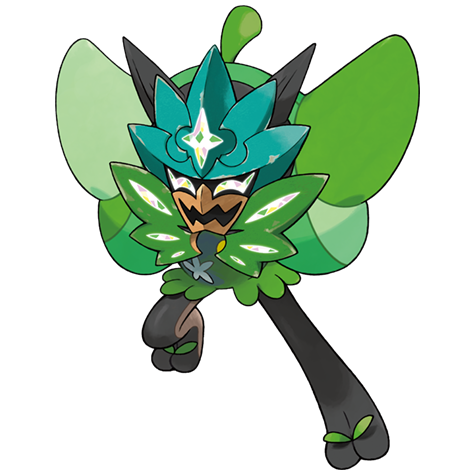
Ugarte: For Ogerpon, I do think there is a bit of new Pokémon syndrome. People do love playing with new tools, but as metas progress, people find more efficient alternatives.
Agati: My issue with Hearthflame Mask Ogerpon is that it is very dependent on Terastallization to do big damage. Without its Attack boost, it feels underwhelming.
Traylor: Yes, and it can’t defend itself by Terastallizing either—Fire typing comes with both benefits and drawbacks defensively…
Ugarte: Definitely agree on Hearthflame Mask Ogerpon being reliant on Terastallizing. It’s a very exploitable weakness.
Shepperd: Has Hearthflame Mask been the predominant choice for Ogerpon?
Cromie: It’s been mixed between Wellspring Mask and Hearthflame Mask Ogerpon. But that said, Jamie Boyt got Top 4 in Toronto with Teal Mask Ogerpon!
Agati: Wellspring Mask Ogerpon, on the other hand, feels like a perfect counter for Rapid Strike Urshifu in theory, since it has Water Absorb and can easily KO Urshifu. However, we’ve seen a lot of Choice Scarf Urshifu that can just use U-turn before Ogerpon moves and do a lot of damage while switching out at the same time.
Ugarte: Wellspring Mask has been a slightly more common choice due to Water Absorb. It helps teams have answers to Rapid Strike Urshifu and the Water Tera Type is, in my opinion, a much better defensive type.
Traylor: Hearthflame Mask Ogerpon and Wellspring Mask Ogerpon are the two frontrunner forms, despite Cornerstone Mask and Teal Mask outplacing them in Toronto. Ogerpon suffers from three key issues in my opinion: not being able to hold an item, not being able to choose its Tera Type, and that most trainers are not using it defensively. Given the amount of priority attacks and Tailwind usage in the metagame, this leads to a lot of Ogerpon that take too much damage before they have the chance to really impact the game.
So I think moving forward, Trainers will have to be much more intentional about how they’re getting the most out of their Ogerpon and covering for its weaknesses.
Cromie: Not being able to choose a held item does make it hard to expand on them tactically—you can’t really try too many new things with them. So as the meta changes and develops around them, they get left behind.
Ugarte: I definitely think that we also might be seeing Ogerpon usage appearing to drop because people are varying their Ogerpon choices. The Top 8 in Toronto had Teal Mask Ogerpon and Cornerstone Mask Ogerpon.
Shepperd: Does the current metagame feel a little bit like a reversion to the top Pokémon we saw in Regulation Set D?
Agati: I’m pretty sure every Pokémon that was top tier in Regulation Set D is still very good in Regulation Set E.
Cromie: In a way, yes! If you look at Shohei’s winning team from Worlds—Flutter Mane, Urshifu, Amoonguss, Iron Hands, Chien Pao, Landorus—it’s very much in line with the current meta.
Ugarte: And there is definitely a bit of a meta shift towards the strong defined tools of Regulation Set D, but Ogerpon and the new Pokémon have undeniably impacted the meta to where it won’t ever be the same as Regulation Set D. However, most consistent Pokémon now were allowed in Regulation Set D and performed well.
Agati: We also saw Pokémon like Clefairy and the new Bloodmoon Ursaluna doing well at recent events, but so far they are not as impactful as Ogerpon.
Traylor: In my opinion yes and no, Chris. For example, among Top 8 teams from the Toronto Regional, only four had a Pokémon from the Kitakami Pokédex.
Cromie: I think when new Pokémon like Ogerpon and Okidogi are introduced, people are eager to try them out. But eventually the meta re-forms to prefer more consistent choices.
Traylor: So there is room for new teams, but most of the really consistent options are coming straight from Paldea or Regulation Set D.
Traylor: Consistency high five!
Shepperd: I was just about to say, consistency is always a theme of these roundtables.
Cromie: That said, I’m very keen to continue exploring Bloodmoon Ursaluna!
Shepperd: I keep hearing about the potential of Bloodmoon Ursaluna. Is it primed to have its big day?
Ugarte: I think it has a very high potential with the right Pokémon around it. The fact it can throw out powerful Normal-type moves without any immunities is a very nice benefit. Blood Moon and Hyper Voice can put serious pressure on unprepared teams.
Cromie: It is a terrifying design! But battle-wise, I think it’s very interesting thanks to its Mind’s Eye Ability—many Trainers run Ghost Tera Type to avoid Normal-type attacks like Fake Out, and there’s also a bunch of Ghost types like Flutter Mane and Gholdengo running around. It’s nice to be able to still hit those! Blood Moon is also a very powerful move, but it does suffer from not being able to be used twice in a row.
If you’re in Trick Room, for example, every turn counts and you don’t want to have to waste a turn not being able to do important damage.
Traylor: It seems pretty committed to Trick Room teams, and its typing gives it some problems that it has to work around. I think it’ll continue to see use, but I don’t know if it will take the metagame by storm—happy to be proven wrong though!
Ugarte: One team that comes to mind when you mention Blood Moon is the team Enzo Reci used in Toronto. It was an interesting utilization of the move since it was used on a fast Tailwind team with a Trick Room option, being able to allow Bloodmoon Ursaluna to thrive in both scenarios based on how it was trained. Applications like that for Bloodmoon Ursaluna are different than the common Trick Room teams we have seen previously, where it’s been mostly locked to only being a Trick Room option.
Cromie: I really like that as a concept. It gives the team a lot of flexibility in Best of 3.
Agati: The biggest challenge Bloodmoon Ursaluna players are facing right now are finding the right Trick Room team; most Tailwind teams have Taunt somewhere and can simply deal too much damage before Trick Room is set up.
Traylor: I liked Eric Rios’ Worlds team with Tailwind Tornadus, Trick Room Flutter Mane, and Ursaluna (not Bloodmoon Ursaluna), so if something similar were to show up, I’d love to see it in action.
Ugarte: I don’t think that Bloodmoon Ursaluna is a metagame-defining threat that will be on every team, but I think it requires some respect when building your team in Regulation Set E.
Agati: A team that can work both on Tailwind and Trick Room is always dangerous to face!
Shepperd: Players have been using Regulation Set E for a while now, and there seems to be some “settling into” the current metagame. Should we still anticipate some major surprises or shifts in the next two weeks?
Cromie: For the international stage, it’s a good question: do you go with a tried and true team? Or do you try to bring something spicy to catch opponents off guard?
Agati: Since we had no Regionals in LATAM with the Regulation Set E ruleset, it’s hard to predict what players from this region will bring to LAIC.
Traylor: Right, it’s hard to know what the strongest Trainers from the region prefer. I think that accounting for Hisuian Arcanine’s success will be a big part of the metagame changing, and I’m not sure how things will shift there.
Ugarte: I do believe since the overall skill level at Internationals is pretty high, your team choice has to be consistent even if it is creative. I also think that a lot of teams will have respect for Tailwind, since it has been frequently performing well.
Traylor: The competition at LAIC will be very intense and will feature the best players playing both teams with popular Pokémon and new teams with strategies that may catch opponents off guard, so I’d be prepared for a mix. I think our definition of what “standard” is might change a little bit by then.
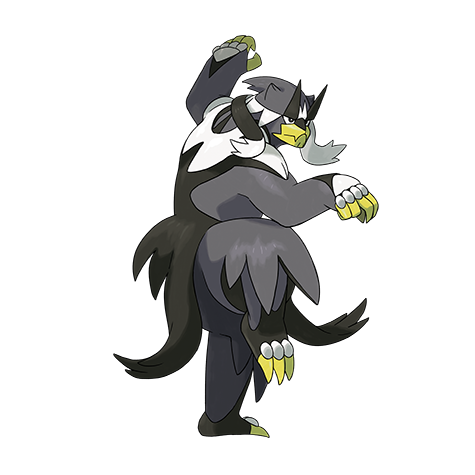
Cromie: Yeah, I agree. I think players who prepare well will have mapped out strategies against the core teams, but I also really wouldn’t be surprised to see Rillaboom advancing and Urshifu in high usage. They just work so well alongside each other, but also against each other in a match!
There will be plenty of Intimidate around too, I am sure—whether it’s Landorus, Arcanine, or even Salamence (which is picking up in places!).
Shepperd: Speaking of which, what is the hype like for LAIC? It hosted only Pokémon TCG and Pokémon GO events last year, so this has to be an exciting moment for VGC players!
Traylor: I am excited to watch LAIC from my couch.
Agati: I’m personally very hyped for LAIC. The biggest LAIC (in 2017) had less than 200 Masters Division participants, while this one already has over 500 people registered. This is also the first LAIC after COVID postponements, and the average talent level of this region got much stronger since then.
Ugarte: It’s always exciting getting to travel and compete in new places! It’s definitely an awesome thing for South American players to have an International Championships to help their qualification to Worlds, along with the huge size of the event compared to previous years.
Cromie: I am super excited! I’ve been lucky enough to be at the past two LAIC events and they are always incredibly hype. So I’m really looking forward to seeing everyone and having a front row seat to the action. The registration numbers alone show we’re going to be in for a treat on the international stage!
Agati: Typically the LAIC has been dominated by US players; I’m hoping this year will be different.
Shepperd: I have to imagine that South American players will be extra motivated for this one!
Traylor: LAIC has always been won by a North American player so far, I think? Ashton Cox, Carson Confer, Ashton Cox again, and James Baek.
Cromie: I mean, you were in the EUIC Finals, Gabriel—LATAM players are always ones to watch out for and I’m sure there will be some epic matches!
Ugarte: I think this year has a lot of potential to be different. I am sure with LAIC coming back after COVID and no VGC last year, the motivation for South American players to win it will be at an all-time high.
Traylor: There are a lot of differences between a 200-person tournament and a 500-person tournament, and as Gabriel was saying, it sounds like the region has really leveled up.
Shepperd: How important is it for players to have a good tournament at this point in the season, even if they’re not making top cut? There’s a lot of time to rebound, but at the same time, it feels good to get off to a good start.
Cromie: It’s super important for the Worlds invite. The top 128 at LAIC will earn you 100 CP. In the EU region that’s 1/4 of your invite already.
Agati: It is definitely the most important tournament of the year for LATAM (except Worlds, of course). There’s just too much CP on the line, which will impact the Travel Awards for EUIC and, of course, the Worlds invitation.
Ugarte: I definitely think how players perform at LAIC will show us a lot about the trajectory of players for the remainder of this regulation set and maybe the next regulation set going forward. There are a lot of players wanting a big Internationals finish and this will also help us identify who is really comfortable and most consistent in the 2024 season thus far.
Cromie: I agree, I think this will be a different LAIC to previous years. The general skill level of competitive Pokémon has also elevated itself in the last year or so, therefore you just know the matches will be incredible. For the South American players, it really is a chance to show off their skill and efforts too, so they will really want to keep the title in LATAM. A lot of top players will be there too, and hopefully we’ll see more of the storylines being built around newcomers breaking out—or veterans establishing more dominance. LAIC will feel very prestigious and key in the road to Worlds this year, I think.
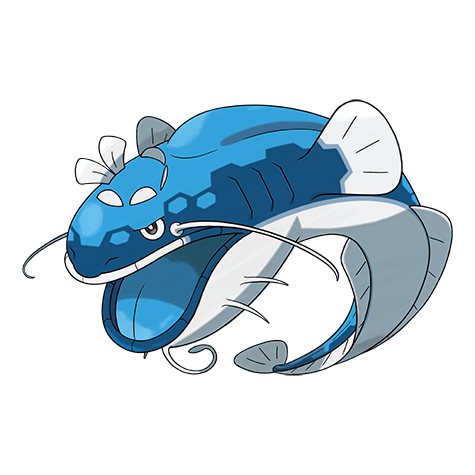
Shepperd: Do you feel like there are regional differences in metagame approach right now? As a bloc can we view the European meta as being different from Brazil, for example? Or has information sharing kinda softened those differences?
Traylor: I think with the global state of information sharing it is kind of challenging to really pick those regional-level differences apart.
Ugarte: Absolutely. I believe out of all regions, Europe opts for the most safe/consistent teams. You can also tell gameplay differences based on what region players are from.
Agati: From my experience playing locals, the best players from Brazil are actually playing with teams very similar to those used in Europe and North America.
Cromie: Yeah, we can be a bit steady Eddie over in Europe! But you’re right that each region has their own mini meta going on. And things get totally wild when you compare to the teams that Japan is cooking up.
Ugarte: North America has always had an interesting amount of variance to me. It can feel hard to get a grasp on the metagame because it feels like such widely different teams perform at a high level, besides the consistent Tailwind teams we mostly see place high at events. I do think North America is a bit more drawn to archetypes like Psychic spam (i.e., Indeedee + Armarouge), dedicated hard Trick Room teams, and Dondozo…more so in the general field rather than in the Day 2 field.
Shepperd: Is this something that players think about when they sit down across from an opponent, or is that reading into the game a little too much?
Ugarte: I do think there is a certain level of consideration you have to give to the meta of a region, especially if the majority are players from a specific region, which in this case would be South America.
Cromie: I often see North America as being the region to bring one Pokémon to the spotlight amongst an otherwise standard looking team. Like, Glimmora was off the radar until it kept popping up in North America. And for example, that region seems to be driving the Arcanine train more than Europe overall.
Ugarte: I definitely think North America can bring some interesting Pokémon to the spotlight.
Cromie: For me, it’s more a consideration when facing a player than a region. For example, Alex Soto in Europe is very well-known for hard Trick Room teams, and you’re pretty likely to face that archetype in the match. But you wouldn’t say that about the region or the Spanish community as a whole. There was a time in 2022 where all the French players were running Shedinja, though!
Ugarte: Kommo-o was a Pokémon that pretty much had no consideration until the Sacramento Regional Championships, when Michael Zhang won with it.
Shepperd: We seem to have this interesting tension between the start of our conversation, where there were a clear handful of dominant Pokémon, and now, where we’re acknowledging a lot of potential surprises or regional meta picks.
Ugarte: Absolutely, player preference almost certainly plays a role in the teams selected—above region trends in some cases.
Cromie: I guess the question is which teams do we think we will see…and then which teams do we think will do well!
Shepperd: That’s a really good point. We often talk about usage percentage, but that doesn’t always translate into victories.
So, which Pokémon are actually going to make the final table?
Cromie: The fact that Simone Sanvito and Chuppa Cross both won the two most recent Regionals with the same six Pokémon means that we can expect to see those six again for sure, but we can also anticipate people planning counters to them.

Traylor: I think Gholdengo has had a really successful last few tournaments and has had a great conversion rate from Day 1 to Day 2 overall. I’m not sure whether Kingambit underperforming in Lille and Toronto is because the metagame has shifted against it, or because Luka Trejgut took a tournament off, but it seems like a natural development as well.
Cromie: I think the finals will be a bit like our Worlds finals this year—one standard-looking team and one with a little something different. I think Gholdengo is really making a comeback at the moment, but also Pokémon like Roaring Moon and Farigiraf are on my radar.
Ugarte: Roaring Moon is a Pokémon that has really stuck out to me throughout Regulation Set E, even though it has had mixed results. I do think the meta is in a very good place for it right now. The addition of Knock Off is a HUGE buff and is so relevant in this metagame where items play such a big role. Not to mention the fact it still gets to Terastallize into a Flying type and use a Booster Energy-augmented Acrobatics to pressure Ogerpon, Urshifu, and other meta picks.
Cromie: Ooh, Kingambit is also a good shout!
Agati: If someone figures out their Tailwind matchup while also having a good approach vs. other teams in the metagame, I believe this person will make a very deep run in the tournament. Some other cores to respect are Dragonite Chien-Pao, Dondozo + Tatsugiri, Trick Room, and more balanced teams like the one Paul Chua and Marco Silva used recently at Regionals.
Traylor: I agree with this. I believe really strongly in approaches that are more moderate and can handle Tailwind with their own strategy that might rely on sometimes setting up Trick Room. Cresselia comes to mind as a frontrunner.
Cromie: Also, in 2017, Ashton Cox won LAIC with Lilligant and Torkoal. With the new and extra-speedy Hisuian Lilligant picking up in places, we might even see this duo make a comeback and try to win the title again!
Traylor: For me, the trouble that I have with Roaring Moon is, as always, how do you deal with Intimidate? When you lead Roaring Moon against a Pokémon with Intimidate, if your Booster Energy would boost your Attack stat, it actually boosts your Speed, leaving your attacks with all the strength of a soggy Fidough. You can get around that by deterring Intimidate or bringing Roaring Moon in the back, but it always has seemed like a core limitation to me.
Ugarte: I definitely think Roaring Moon is a Pokémon that is almost always better saved in the back for a late-game sweep after removing its checks early in the game, or used early with the Breaking Swipe / Tailwind set to enable other partners.
Shepperd: I’d like to hear some predictions on players! Who is in a good place to win the whole thing?
Ugarte: One player who has impressed me this year and has shown an unparalleled level of consistency is Riley Factura. He’s performed really well since the start of the 2024 season, winning the Pittsburgh Regionals, finishing Top 8 in Peoria, and getting to the finals in Sacramento.
Agati: From LATAM, I’m very excited to watch performances by Paul Ruiz and Sebastian Escalante.
Traylor: I’m really interested in Sebastian Escalante, a player from Argentina who recently returned to the scene after five years away. He placed 9th at Worlds in 2016, 5th at Worlds in 2017, and dominated Regionals in South America as well as International Championships all over the world. Also, let’s go Gabriel!
Cromie: I can’t wait to see Sebas back in action! I remember him being a standout in 2017. Also, Agati, after your 2nd-place EUIC finish, I’d love to see you take the title on this one!
Traylor: Riley is definitely a frontrunner from North America. He’s had an extremely impressive span of four tournaments—maybe the best start to a format. I think a lot of us are rooting for you, Gabriel!
Shepperd: No pressure, Gabriel!
Cromie: After Riley Factura, Alberto Lara is also very consistent but hasn’t quite got those podium finishes lately. Paul Chua is also very strong!
Traylor: We’re also rooting for noted top player Joseph Ugarte, who has a history of performing quite well at International Championships, but has not yet managed to take the title… Could this be his year?
Ugarte: If I do perform well, Aaron, I do hope I can at least get past Top 4 this time.
Traylor: Shout out your fellow roundtable experts when you do.
Ugarte: I also think Marco Silva has been very consistent and is a frontrunner from Europe well-positioned to take a title again, especially since he has already won OCIC in 2020.
Agati: I also think Brazilian players shouldn’t be underestimated. Thiago Lattanzi is the most consistent players across the three Brazilian Regionals we had (Top 16, Top 8, and Top 4), and he’s going to play his first LAIC this year. He’s a very creative team builder as well. People should keep an eye on him.
Cromie: From Europe, you have to keep an eye on Eric Rios and Marco Silva, both of which have won an International Championship before!
Shepperd: I forgot to mention, it’s actually a VGC roundtable rule that we have to mention Eric Rios and Marco Silva. (They’re both awesome players, so I’m glad you did.)
Traylor: LOL
Cromie: Haha it’s why I’m here right? To talk about Eric, Marco, and Gastrodon. All top-tier topics.
Fortunately, Eric and Marco are doing very well at the moment too. Wait… Also Simone Sanvito and Edu [Eduardo Cunha], again both previous IC champs and now Regionals champs this season too. That is, if they’re all attending—I’m not 100% sure on who will make the journey.
Traylor: I believe Chuppa Cross, our most recent Regional champion, is going to LAIC. He had one of the most impressive performances in North America last year, which was perhaps the most competitive the region has ever been. I would not be surprised to see him continue his streak of dominance.
Cromie: I was so happy to see him finally get a Masters Division Regional title!
Agati: Edu, Rios, Simone, and Marco will be safe picks for every tournament they attend. I also played Chuppa at Worlds this year and was very impressed with his level of play.
Shepperd: If we were to expect the unexpected, what would we look for in São Paulo?
Ugarte: In terms of unexpected picks, I wouldn’t be surprised to see a new player or player without many accomplishments perform and make a deep run… It’s been a theme that has been occurring more and more throughout this season and the previous season.
Agati: Sinistcha! I think it’s an underrated Pokémon with a lot of unexplored potential.
Traylor: +1 for Sinistcha!
Ugarte: Oh, we meant Pokémon…
Shepperd: Any of the above!
Traylor: It can be whatever you want it to be.
Cromie: I can’t pronounce that Pokémon’s name! But I think it’s super underrated at the moment. Its Matcha Gotcha move is so good!
Ugarte: Sinistcha wins my personal award of most annoying Pokémon to play in the universe. Strength Sap, Rage Powder, Matcha Gotcha… It can do a lot to throw off a game.
Agati: Yep, it’s just too much utility in for a single Pokémon! It also has Trick Room.
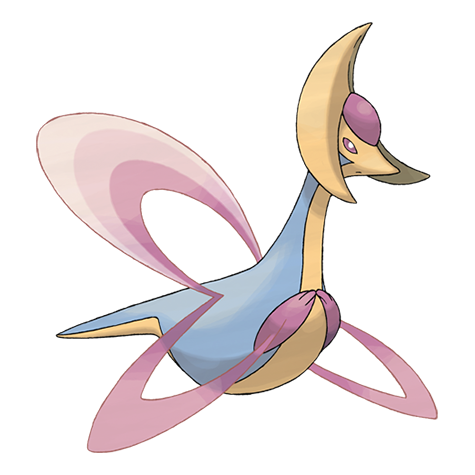
Traylor: I think my hot take is that I believe in Cresselia to take the title. I’m not sure why people stopped looking at it after Riley won Pittsburgh Regionals. I think teams that blend 2012/2015-style Cresselia gameplay with more modern offensive tools have the defensive strength to survive the onslaught of leads such as Chien-Pao + Dragonite or Tornadus + Urshifu. They also have the offensive strength to end games in a reasonable amount of turns and enough control to give a high-level player the tools to lock in a win.
Ugarte: Cresselia is an incredible Pokémon when used in the right context.
Shepperd: It’s hard to believe that using Cresselia, one of the most popular VGC Pokémon ever, can be a hot take—but here we are!
Agati: I agree with Aaron that Cresselia is very underplayed. Eduardo Cunha also won a big Midseason Showdown in Spain using Cresselia. Since we are mentioning Trick Room users, Farigiraf is always an anti-meta pick that you need to respect.
Traylor: Cresselia was one of the most poorly performing Pokémon in Toronto—despite its 7% usage rate, only one just barely squeaked into Top 32. But I think it’s just misunderstood!
Cromie: Now bear with me, but I also legitimately think Gastrodon usage will increase. Storm Drain is just so good with all the Surging Strikes and Water Ivy Cudgels running around. Earth Power is also very nice for Heatran and Gholdengo. And you can have a cheeky Ice Beam for those Flying types—especially Landorus. It’s navigated its way successfully in Rillaboom metagames before (World Champ Gastrodon!) so it can, especially with Terastallization, find a way around it. Whether it’s used synergistically with the rest of the team, I think, will be its struggle.
Ugarte: I’m always a fan of Gastrodon usage going up! Hopefully the pink one though.
Cromie: #teamgastrodon
Clearly those players were using West Sea Gastrodon…
Traylor: Fixed! Haha!
Agati: If Gastrodon players figure out how to deal with the huge amount of Grass types in the format, it can definitely have a big run. It’s actually one of the most consistent Rapid Strike Urshifu answers, at least in a vacuum.
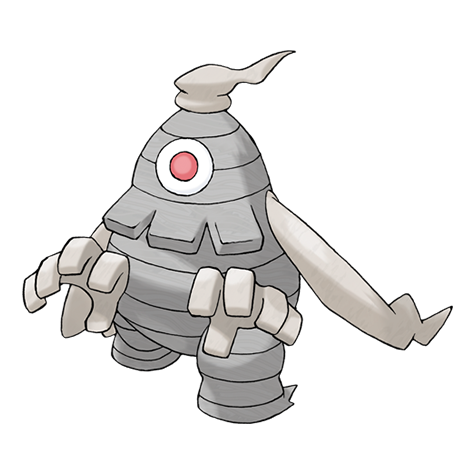
Cromie: I also think little Dusclops might pick up on usage a bit. It’s appeared on some Trick Room teams lately. It’s one I’d like to see do well.
Ugarte: If I had to pick a surprise team to win it all, I’d be looking towards Haze Dusclops + Ursaluna. I really think Ursaluna can take down a lot of current teams in the metagame and people haven’t found the best way to exploit its strengths yet. And I think Haze Dusclops is the closest people have gotten to finding the best version.
Cromie: I forgot it got Haze! Dusclops has always been the Pokémon that suffers from only four move slots; there’s just so many great things to run on it!
Traylor: It sounds like in general we’re all in agreement that Trick Room approaches and Pokémon with slower Speed stats might be well-positioned. Given that we come from four pretty different backgrounds as far as teambuilding and preferences go, it might be the case that this is evidence of a broader trend in how players are thinking when digesting the October Regionals results.
Shepperd: I’m going out on a limb a little, but Worlds isn’t that far in the past. Are there lessons to be learned from it since it was the last event of this size?
Traylor: Yes. Sanvito and Chuppa’s team was directly inspired by Hirofumi’s Worlds team.
Ugarte: Always. Respect. Amoonguss.
Cromie: Ahahaa!
Agati: Always. Respect. Urshifu. It was on all eight of the top teams at Worlds.
Ugarte: Too often players forget Amoonguss exists, and it always manages to win a big tournament when it’s most disrespected in the metagame.
Traylor: I wonder if there are other concepts from successful Worlds teams that could be applied to Regulation Set E teams that haven’t been yet.
Agati: Yeah, the use of Safety Goggles has fallen off and this feels like a mistake from players. I think people got too excited with the addition of new Grass-types like Ogerpon and forgot Amoonguss is still a top-tier Pokémon that demands respect.
Cromie: I’d say to watch out for weather as advice to players. We’ve recently seen Tyranitar for sandstorms, Alolan Ninetales for snow, and classic rain and harsh sun with Tornadus and Torkoal do really well. Players need to prepare for those, too. Be careful—there’s a storm coming, Trainers!
Agati: LOL
Justin Tang also brought a really cool team with Salamence with Hurricane and Pelipper to get Top 8 in the last Regional.
Traylor: That team looked like it was straight out of Regulation Set A.
Ugarte: It was definitely a team that reminded me a lot of early Pokémon Scarlet and Pokémon Violet matches. Salamence is an interesting Pokémon that exploits the common usage of Ogerpon to its advantage. I’m not sure how good it will be going forward, though.
Cromie: There wasn’t a huge amount of weather dominance at Worlds, but I think that’s a shift we’re starting to see.
Shepperd: I do appreciate that the VGC doesn’t change so drastically along regulation shifts.
Cromie: Just wait until Incineroar is released…
Traylor: Also, where the heck did Chi-Yu go?
Cromie: I see a bunch of Chi-Yu + Flutter Mane still in Juniors and Seniors, but not so much in Masters.
Shepperd: Before we wrap, is there anything you’d like to make sure gets mentioned?
Agati: Since we spoke about underrated Pokémon, I’ll give my opinion on underrated players that can do well as well! Brazilian players Hugo Nascimento (the first Brazilian to ever make Day 2 Worlds through Day 1 last Worlds!) and Nader el Bacha (won Curitiba Regionals undefeated 10-0) are some names to be respected.
Cromie: Don’t sleep on LATAM players at LAIC.
Agati: I’m hoping we will get our first International champion from Latin America!
Ugarte: Watch out for new talent. I believe with the growth of the game, the chances for a new player taking home an International title sooner rather than later is very likely.
Cromie: This really is a new era of ICs since Pokémon Scarlet and Pokémon Violet, and I think both competitors and spectators will learn a lot from watching and analyzing these teams and the plays made. I really think there’s going to be some inspiring moments this event.
Shepperd: The rapid growth of LAIC certainly includes a lot of homegrown players. It’s going to be an exciting tournament for sure.
Traylor: I’m excited to watch some top-tier battles between the world’s best. I agree with Lou that this is a whole-new era of LAIC, and I think it’ll be a blast to tune in.
Cromie: Get me to Brazil already!
Shepperd: Is this a nervous time for players since they have several weeks where they’re getting very little new input about the metagame?
Traylor: I think could potentially be the case, but it also could be refreshing to have that period of time after a month of nonstop Regionals.
Ugarte: I think the time in between will be a good break for players to reevaluate teams and strategies and perhaps some time to test new ideas without the pressure of an upcoming tournament happening immediately.
Agati: Local events are having a very important role in LATAM right now both to explore the metagame and for the Championship Point race.
Cromie: I think it’s time to connect with your training groups and work together to prepare. Two weeks isn’t a long time, and although we have a decent amount of Regional results to analyze, it can be hard to balance prep work for the event with real life. So teamwork will make the dream work in these two weeks.
Shepperd: All right, I think that does it! I want to thank everyone for what has been another awesome roundtable. Good luck to everyone in their respective roles (including Aaron, once again watching from his couch).
About the Writer
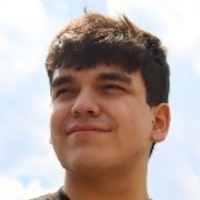
Joseph Ugarte
Joseph Ugarte is a full time VGC competitor and content creator. Competing since 2017, he has had three Top 4 placements in Internationals, two Worlds Top Cuts, and two Regionals wins, along with lots of other strong Regional finishes. He loves being involved in the community efforts to grow and expand the game further!
About the Writer

Lou Akcos-Cromie
Lou Akcos-Cromie has been an official Play! Pokémon commentator since 2017 and has been honored to cast multiple International and World Championships in her career so far. As the #1 East Sea Gastrodon fan, she is always excited to see her favorite Pokémon do well, but is also intrigued by off-meta picks that catch her by surprise! Outside of Pokémon, you can most likely find Lou surrounded by cats or teaching English and Debate in the school classroom.
About the Writer

Gabriel Agati
Gabriel Agati is a VGC player and content creator from Brazil that started competing in 2014. He has qualified for every World Championship since 2017 and got 10th place at the 2019 World Championship using his most beloved Pokémon: Ditto. Outside of Pokémon, Gabriel is an environmental engineering student.
About the Writer

Aaron Traylor
Aaron Traylor has been competing in the VGC since 2011. He placed in the Top 8 and the Top 16 at the World Championships in 2016 and 2019, respectively. He believes that the friendship between Trainers and their Pokémon is ultimately what leads to success in battle. Outside of Pokémon, he is a graduate student studying computer science and cognitive science.
Source: Pokemon.com
Learn which Pokémon, attacks, and Trainers to keep an eye on during this exciting competition.
By Amanda Lundberg, Contributing Writer
The 2024 Pokémon GO Championship series has started, and more players than ever are vying for the chance to be crowned the next World Champion. The next major opportunity for competitors to prove their mettle is the 2024 Latin America International Championships (LAIC), taking place November 17–19, 2023. With the newest attack updates from the Adventures Abound Season, players and audience members alike are taking note of the interesting Pokémon they can expect to see battling on the big stage in São Paulo, Brazil. While Medicham and Lanturn are still two of the most popular Pokémon in the “show six, pick three” format, some unique choices like Guzzlord, Shadow Magnezone, Clefairy, and Greninja have made day two of regional competitions. We’ve even seen Shadow Dragonite and Pelipper on championship teams!
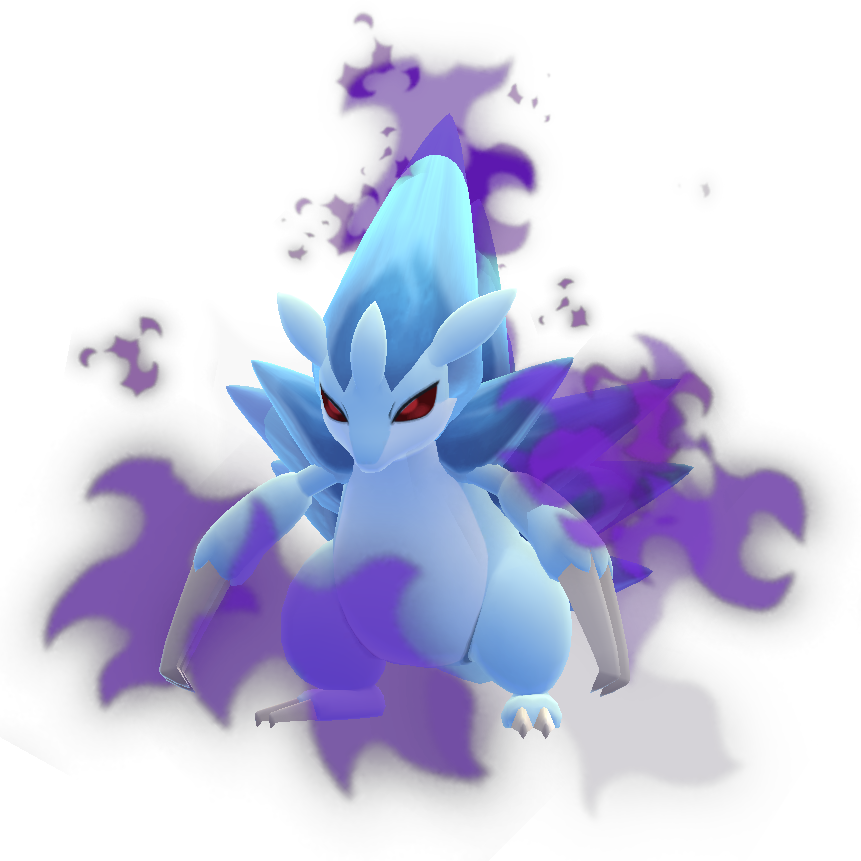
With the Fast Attack Wing Attack getting a nerf, it seems that Noctowl’s reign as the Flying-type Pokémon of choice is over. Noctowl previously ranked number two in usage, but is now nowhere to be found in competitive play. And without its feathery presence on the battlefield, many Grass-type Pokémon, like Serperior and Shadow Venusaur, have decided they simply do not give a hoot(hoot) and are making their way back into the arena. Gligar has also risen in popularity because of buffs to both of its top Charged Attacks, Aerial Ace and Dig. The ascendancy of these Pokémon has resulted in a similar rise in the use of Shadow Alolan Sandslash. In previous Seasons, this Ice- and Steel-type Pokémon was trained to learn the Fast Attack Shadow Claw, but many are now opting to use Powder Snow for broader coverage in the current metagame. In fact, Shadow Alolan Sandslash has become so popular that in the Toronto Regional Championships, its day two usage was right behind its hardest counter, Medicham.
The latest attack updates have made for a dynamic game that has been changing frequently throughout the 2024 Pokémon GO Championship series. Around October, though, things seemingly started to calm down because the familiar team of Serperior, Umbreon, Gligar, Froslass, Medicham, and Lanturn has now won TWO regional competitions! 0ELITE0 was the first Trainer to pilot this team to victory in Sacramento and JJans11 quickly followed two weeks later, securing his Worlds invitation in Toronto. It is also fun to note that KingOwlexander won Peoria with a similar team, with only Lickitung replacing Umbreon in the lineup. And with all these Regional Championships being in North America, many competitors are curious to see if the team will have continued success in other regions.
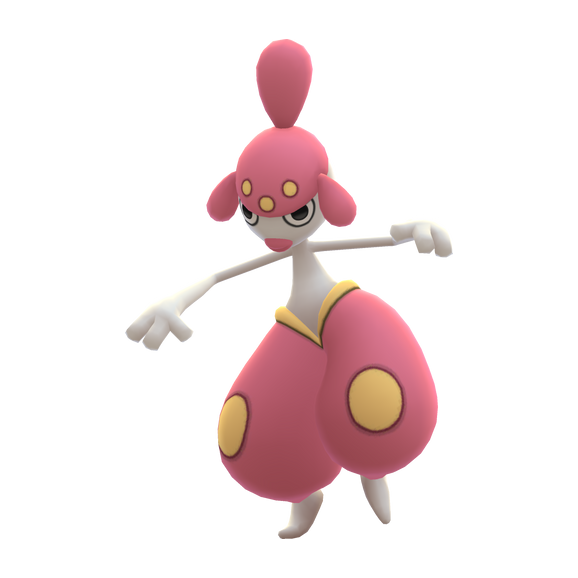
Attack updates aren’t the only changes we’re seeing this competitive season! The 2024 LAIC will also be the first competition for Pokémon GO to use open team sheets. Open team sheets allow players to see not only which Pokémon their opponent are bringing, but also what move sets each Pokémon are trained to learn. While a few players may be a bit disappointed to have their opponent already know whether the Lanturn is running Water Gun or Spark as its Fast Attack, many see the system as an equalizer for tournaments, since there will no longer be a disadvantage from being shown early on stream. We may also see fewer Lickitung and Registeel being used as safe swap or pivot Pokémon if a player knows their opponent’s Medicham move set. While Medicham is still running the Charged Attack Ice Punch in hopes of freezing out Flying- and Grass-type Pokémon, many players are opting to run the Charged Attack Dynamic Punch over Psychic. This sets Medicham up to be a little better against Fighting-, Normal-, and Steel-type Pokémon and is yet another change many players have adapted to.
The biggest change for Pokémon GO this season is the addition of Championship Points, giving players who do not win a Regional Championship a new way to qualify for the Pokémon World Championships. Each region has a different threshold they must meet to qualify; North America needs the most, 500 points, while the Middle East and South Africa need 200 Championship Points to secure their invitation to the 2024 Pokémon World Championships in Honolulu, Hawaii.
Each type of competition, from Regional Championships to League Challenges, awards a specific number of points to competitors. International Championships are especially exciting because the amount of available Championship Points increases dramatically. Instead of 200 points going to the champion, first place receives a whopping 500 points! Second place receives 400 points, and third and fourth place both get 320 points, which already meets the threshold of 300 qualification points for Latin America. This means that after the dust settles at the LAIC in São Paulo, many new players will be receiving their 2024 Worlds invitations!
So far, the only Latin American Trainer who has qualified for the 2024 Pokémon World Championships is LNDsRargef, a Brazilian Trainer who finished the Curitiba Regional undefeated and set a new record for the Pokémon GO competitive scene. But with this high level of competition, LNDsRargef may now have a target on his back as many other Trainers are looking to take home a title of their own.
So who are some of the contenders who may soon be punching their ticket to Worlds? Let’s take a look at a few competitors slated to battle at the upcoming 2024 Pokémon Latin America International Championships. And don’t forget—even if you can’t make it to the event in person, you can still catch all the action on Twitch.tv/PokemonGO!
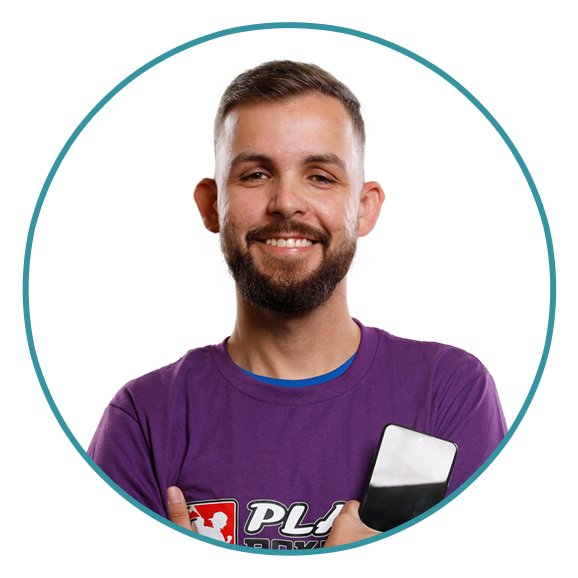
Let’s start off with Zarddy, because any list of top-level players should mention the two-time regional champion who was also awarded the title “The Best Pokémon GO Player in Brazil” in a grassroots competition. Zarddy placed fifth overall in the first ever Pokémon GO World Championships and has already started the 2024 season strong, placing in the top 8 in the Curitiba regionals. Zarddy is known for bringing off-meta picks, and many Pokémon GO players are interested to see what he may bring to shake up the LAIC meta.
MartoGalde is an Argentinian Trainer and a crowd favorite who has gained quite a following over years of competitive gaming. Marto qualified for the 2022 Pokémon GO World Championships but fell a little short in the 2023 season since only the first or second place winners got qualifications at most events. But with the new addition of Championship Points—and the grit and determination Marto displays—I can easily see him gaining the 220 points he currently needs to be on his way to Honolulu, Hawaii for this season’s Pokémon World Championships!
Someone who I personally think is going to get his qualification at LAIC is Mexican player AndrewManjarrez. Andrew competed in the 2022 Pokémon GO World Championships, and this season he is currently sitting right behind LNDsRargef on the Latin American leaderboards with 190 Championship Points. With the way this competitor has continually been top cutting and putting on a performance in the 2024 season, his remaining 110 points are going to be flooding in quicker than Swampert’s Hydro Cannon!
The GBLindos—or “LNDs” —have always put up fierce competition, and any player with this prefix in their Trainer name is someone to keep an eye on. LNDsRargef was already mentioned as the Curitiba Regional champion with an undefeated run. LNDsTSteinar and LNDsAureo are already household names in the Brazilian community, but another Trainer to be on the lookout for is LNDsJuhsmuniz. LNDJuhsmuniz is one of the few female battlers taking to the big stage in Latin America, and earning third place at the Curitiba Regionals has solidified her high spot on the leaderboard.
Brazilian Trainer PatrickyAlbani will also be taking the stage and is ready to make waves. Patricky is a well-known battler in both the Play! Pokémon and GO Battle League scenes. He qualified and participated in both the 2022 and 2023 Pokémon World Championships and has most recently top cut this season in his local regional competition in Curitiba, Brazil. With 100 of the 300 points needed to solidify his spot, Patricky is definitely well on his way to compete in Worlds for the third time.
Lastly, we can’t talk about the LAIC without talking about JWNaldo. JWNaldo will be returning to São Paulo to defend his title as reigning LAIC champion. After winning last season with a combination of spicy and meta Pokémon, many are wondering if we will see a return of JWNaldo’s Toxapex, especially with the rise of Fairy-type Pokémon like Clefairy, Alolan Ninetales, and Carbink making their way back into the “show six, pick three” format.
There are many more well-known and talented Trainers who will be competing and many newcomers who are ready to prove they have what it takes to be the very best. Regardless of who you’re cheering for, the 2024 Pokémon Latin America International Championships will be a show you’re not going to want to miss! With players placing first through fourth getting enough Championship Points to qualify for Worlds, all eyes will be on the LAIC to scope out the competition and see how the Pokémon GO “show six, pick three” meta continues to evolve. I feel extremely honored to be able to cast over this tournament, and I hope to see and commentate over many talented Trainers within the LATAM community. Good luck and have fun, Trainers!
About the Writer
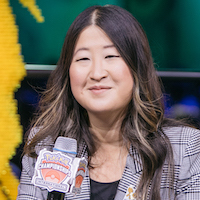
Amanda Lundberg
Amanda Lundberg (Lundberger) is a contributing writer for Pokemon.com and the favorite Pokémon GO commentator of two World Champions’…moms! Follow her Pokémon travel adventures at youtube.com/@LundbergerPoGo or on x.com/Lundberger.
Source: Pokemon.com
Pokémon International Championships, São Paulo | LAIC 2024
Welcome to the first International Championships of the Play! Pokémon 2024 season – the Latin America International Championships in São Paulo, Brazil!
Find out where this season’s Internationals will take place, and learn about a huge boost to Championship Series prize pools!
We recently announced changes to the 2024 Pokémon Championship Series, including the addition of Pokémon GO to the Championship Points qualification system and adjustments to the World Championships qualification system. This time around, we’re sharing additional details about the long-awaited increase to prize-pool numbers at premier events, CP bars for the 2024 Pokémon GO Championship Series, and info on the upcoming International Championships.
Prizes for top finishes at events are going up in 2024! Player attendance for the Pokémon TCG and Pokémon VGC has ballooned across the board at Regional Championships and International Championships since we last assessed prize pools. To reflect current attendance numbers, we are implementing a major prize-pool increase for Regional, International, and World Championships. Attendance will no longer affect prize money, so players will know exactly how much prize money is on the line before they know how many other players there are in the tournament.
These changes are most prominent in the Masters Division for Pokémon TCG and VGC competitions—where the increase in player participation is most pronounced—while Juniors, Seniors, and Pokémon GO players will earn equivalent or higher prizing than they received last season at their expected attendance tiers.
Key highlights include:
- The International Championships prize pool is now over half a million dollars across TCG, VGC, and Pokémon GO.
- The Worlds prize pool is now over 2 million dollars across TCG, VGC, Pokémon GO, and Pokémon UNITE.
For more details on the new prize pool, please check out the Regional Championships, International Championships, and World Championships pages.
Players in the Pokémon GO Championship Series all compete together regardless of age, so the CP bars for World Championship qualification only differ by region. See below for a table of the World Championship qualification CP bars for each region.
| US & Canada | Europe | Latin America | Oceania | MESA |
| 500 | 400 | 300 | 300 | 200 |
See the 2024 Pokémon GO Championship Series page for more details.
Save the dates! International Championships in Latin America, Europe, and North America are now locked in for the 2024 Pokémon Championship Series. Look forward to the Latin America International Championships in São Paulo, Brazil; the Europe International Championships in London, United Kingdom; and the North America International Championships in New Orleans, Louisiana, United States.
| Event | Venue | Address | Date |
| LAIC | Expo Center Norte – Pavilhão Amarelo | Av. Otto Baumgart1000 – Vila GuilhermeSão Paulo – SP, 02049-000, Brazil | Nov. 17–19, 2023 |
| EUIC | ExCeL Center London | 1 Western GatewayLondon E16 1XL, United Kingdom | April 5–7, 2024 |
| NAIC | Ernest N. Morial Convention Center | 900 Convention Center Blvd. New Orleans, LA 70130 |
June 7–9, 2024 |
The International Championships were introduced in the 2017 season and were designed around the sizes of our four major rating zones at the time: Europe, Latin America, North America, and Oceania. Following the restructuring of the Oceania rating zone in 2020, that region was split into two smaller rating zones: Asia-Pacific and the newly defined Oceania rating zone. Since then, we have been assessing how we can best serve our global player base, and we have made the difficult decision to remove the Oceania International Championships from our circuit.
We will continue to support this rating zone with Regional Championships (stay tuned for details), and players from this rating zone are still eligible to earn travel support to other International Championships and Worlds. We hope that the other changes you see come out of the 2024 season show our resolve to improve the Play! Pokémon experience for Trainers around the world.
Source: Pokemon.com
Source: Pokemon


